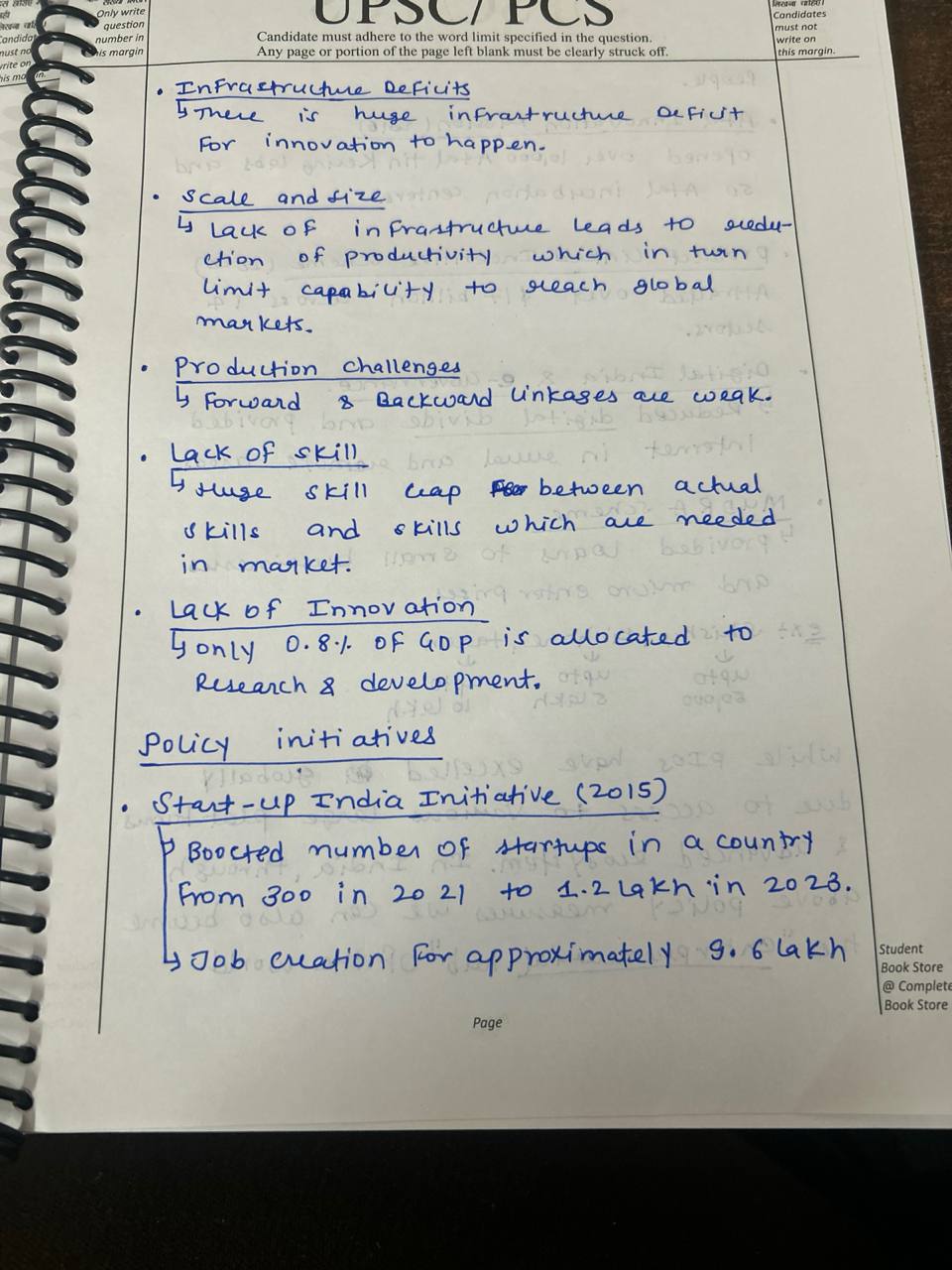Roadmap for Answer Writing 1. Introduction Definition of Infrastructure Investment: Briefly explain what infrastructure investment entails and its significance for economic growth. Thesis Statement: State the importance of infrastructure investment for rapid and inclusive economic growth, particularly in the context of India. 2. Body A. ...
Model Answer Introduction Inclusive growth in India has remained a challenge despite government efforts. Since the economic reforms of 1991, while prosperity has increased, so have disparities. Wealth has concentrated in already developed regions, widening inequalities and leaving behind poorer areaRead more
Model Answer
Introduction
Inclusive growth in India has remained a challenge despite government efforts. Since the economic reforms of 1991, while prosperity has increased, so have disparities. Wealth has concentrated in already developed regions, widening inequalities and leaving behind poorer areas. This situation calls for an examination of the challenges posed by careless and ineffective manpower.
Major Challenges for Inclusive Growth
- Poverty and Low Human Development: Poverty severely limits individuals’ capabilities and resources, exacerbating governance failures.
- Lack of Employment Opportunities: Many individuals face insufficient job prospects, leading to underemployment or disguised unemployment, especially in agriculture.
- Education and Skill Development: Inadequate education and skill training hinder productivity. As noted by Niti Aayog, the absence of high-wage jobs results in a labor force that is not fully utilized.
- Infrastructure Deficits: Both social and physical infrastructure are lacking, particularly in backward regions, which further compounds the problem.
- Governance Issues: A governance deficit in less developed areas exacerbates the problem, limiting effective policy implementation.
Measures to Address These Challenges
- Investment in Social Infrastructure: The government must enhance investment in education, health, and skill development. Improving learning outcomes should be a priority.
- Upgrading Health Infrastructure: Given that poor health affects intellectual development, it is crucial to improve health services, which are currently inadequate.
- Integrating Skill Education: Skill education should be embedded in the school curriculum to prepare a capable workforce.
- Promoting Digital Literacy: Increasing digital literacy can leverage opportunities in technology and innovation.
- Utilizing Existing Programs: Initiatives such as Digital India, Skill India, and the Right to Education should be implemented effectively to enhance human capital quality.
Conclusion
The careless and ineffective deployment of manpower has hindered both individual potential and India’s economic growth. Proactive measures by the government, including the implementation of programs like Sarva Siksha Abhiyan and Pradhan Mantri Kaushal Vikas Yojana, can facilitate inclusive growth and unlock the country’s true potential.
See less



Model Answer Introduction Basic infrastructure facilities form the bedrock of economic growth. Without adequate infrastructure, India's economy operates below its potential, hindering both rapid and inclusive growth. Investment in infrastructure is crucial to address these challenges. Body CreationRead more
Model Answer
Introduction
Basic infrastructure facilities form the bedrock of economic growth. Without adequate infrastructure, India’s economy operates below its potential, hindering both rapid and inclusive growth. Investment in infrastructure is crucial to address these challenges.
Body
Creation of Jobs
Infrastructure development projects, such as road construction and railway expansion, are labor-intensive, significantly boosting employment opportunities in both formal and informal sectors. For instance, the Mahatma Gandhi National Rural Employment Guarantee Act (MGNREGA) exemplifies how infrastructure initiatives can create jobs and fuel domestic demand.
Multiplier Effect
Capital expenditure on infrastructure has a multiplier effect of 2.45, stimulating both demand and supply. This leads to accelerated economic growth and job creation. The National Infrastructure Pipeline (NIP) for FY 2019-25 aims to provide world-class infrastructure, enhancing citizens’ quality of life.
Improved Connectivity
Investments in infrastructure enhance connectivity between regions, fostering economic integration. Projects like Bharatmala and Sagarmala improve trade and commerce, driving economic growth by facilitating smoother movement of goods.
Reducing Logistic Costs
World-class infrastructure such as roads, railways, and ports can significantly reduce logistic costs, which currently stand at 12-14% of GDP—higher than the global benchmark of 7-8%. Initiatives like the Gati Shakti scheme aim to streamline multi-modal connectivity, thereby lowering logistics expenses.
Inclusive Growth
Infrastructure investment promotes inclusive growth by extending access to essential services like education and healthcare to underserved communities. The Pradhan Mantri Awas Yojana (Housing for All by 2022) aims to provide dignified housing to all by addressing the needs of those living in inadequate conditions.
Increased Productivity
Infrastructure development leads to greater productivity by facilitating the efficient flow of goods and services, thereby reducing transaction costs and enhancing production efficiency.
Conclusion
Investment in infrastructure is vital for India’s journey toward achieving sustainable development goals (SDGs). Initiatives like the NIP, Gati Shakti, and NaBFID must be effectively implemented to establish a robust foundation for a self-reliant India (Aatmanirbhar Bharat).
See less